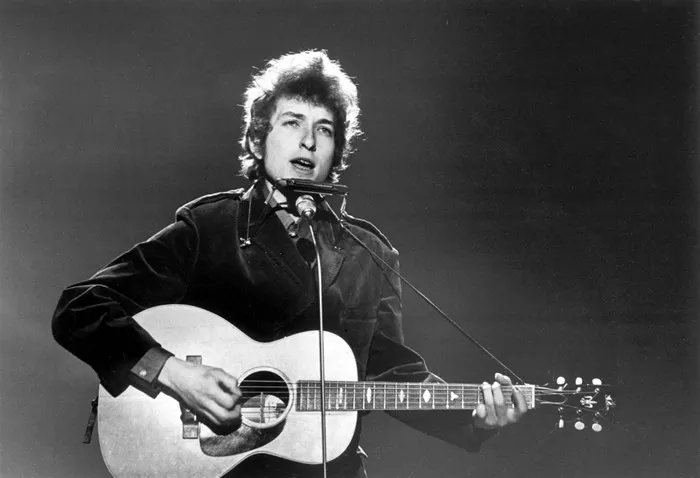Folk music and rock music are two genres with distinct roots, each offering its own unique elements. However, over time, many artists have sought to blend the storytelling and acoustic sounds of folk with the energy and instrumentation of rock. One artist who is widely credited with successfully merging these two genres is Bob Dylan. His groundbreaking work in the 1960s marked a turning point in the evolution of popular music. This article will delve into how Bob Dylan pioneered the fusion of folk and rock, and the lasting impact of his innovative approach.
The Birth of Folk-Rock
The combination of folk and rock music can be traced back to the mid-1960s, a period of social and cultural upheaval. Folk music, which had long been associated with political activism, protest songs, and simple acoustic instrumentation, was the soundtrack for many movements advocating for social change. Rock music, on the other hand, was characterized by louder instrumentation, amplified guitars, and a more rebellious spirit. Both genres were rich in their own right, but the fusion of the two required a pioneering artist.
The Music Life of Bob Dylan
Humble Beginning
Bob Dylan, born Robert Allen Zimmerman in 1941, grew up in Duluth, Minnesota, before moving to Hibbing, where he spent much of his youth. From an early age, Dylan was exposed to a wide range of musical styles. His family listened to gospel, country, and pop music. Dylan was particularly drawn to folk music, which resonated with him due to its storytelling tradition and its connection to societal issues.
In the early 1960s, Dylan moved to New York City, where he immersed himself in the Greenwich Village folk scene. It was here that Dylan’s unique musical vision began to take shape. He became a key figure in the folk revival movement, performing at coffeehouses and quickly gaining recognition for his poignant, often politically charged lyrics. His early work was heavily influenced by the music of Woody Guthrie and other folk legends, and he became known for his ability to weave narratives that captured the essence of the human experience.
The Shift to Rock: A Bold New Direction
In 1965, Bob Dylan made a bold decision that would forever alter the trajectory of his career—and that of popular music as a whole. He famously “went electric” at the Newport Folk Festival, performing with an amplified rock band. This move was met with fierce backlash from many of his folk music followers, who felt that Dylan was betraying the purity of acoustic folk music. However, Dylan’s embrace of electric instruments was not a rejection of his folk roots; instead, it was a natural evolution of his musical vision.
Dylan’s decision to incorporate electric guitars and a full band into his sound was revolutionary. This marked the beginning of the folk-rock movement, which combined the introspective lyricism of folk with the bold, amplified sound of rock. His first album after going electric, Bringing It All Back Home (1965), featured songs like “Subterranean Homesick Blues,” which blended folk-style lyrics with the driving rhythms and electric guitar of rock music.
Notable Album
Highway 61 Revisited and the Rise of Folk-Rock
Dylan’s 1965 album Highway 61 Revisited represented another major step forward in his fusion of folk and rock. The album, which included the iconic track “Like a Rolling Stone,” demonstrated Dylan’s growing mastery of the rock genre while still maintaining his folk-inspired lyrical style. The song “Like a Rolling Stone,” with its electric instrumentation and biting lyrics, became an anthem for a generation. It was a momentous release in the history of rock and folk music, cementing Dylan’s place as a pioneer of the folk-rock genre.
At the time, Dylan’s decision to move into rock music was seen by some as controversial, but it was ultimately a decision that would change the landscape of popular music. His seamless blending of folk music’s poetic lyricism with rock’s electrifying instrumentation created a new sound that resonated with fans across generations and genres.
The Influence of Dylan’s Folk-Rock Sound
Dylan’s impact on music cannot be overstated. His transition to rock music encouraged other artists to experiment with the fusion of folk and rock, and many followed in his footsteps. The Byrds, for example, took inspiration from Dylan’s work and helped further popularize the folk-rock genre with their hit single “Mr. Tambourine Man,” a song written by Dylan himself. The Byrds’ jangly guitars and harmonies, combined with Dylan’s folk lyrics, helped bring the folk-rock sound to a wider audience.
Dylan’s approach to blending folk and rock was not just about mixing musical styles, but also about pushing the boundaries of what was possible within popular music. He challenged the norms of both genres and proved that folk music could evolve while still staying true to its roots. His legacy has had a profound effect on music and culture, and his groundbreaking work in folk-rock remains a benchmark for artists seeking to create music that is both thought-provoking and sonically daring.
See Also: What is the Characteristic Rhythm Pattern in Rock Music Called?
Conclusion
In conclusion, Bob Dylan was the artist who first successfully combined folk music and rock music, paving the way for the folk-rock movement and influencing generations of musicians. His groundbreaking work in the 1960s demonstrated that folk and rock could coexist in a way that was both innovative and emotionally powerful. By embracing electric instruments and experimenting with new sounds, Dylan brought folk music into the modern age without sacrificing its core principles.
Dylan’s impact on the music world cannot be overstated. He changed the way people listened to music and the way musicians approached the art of songwriting. His fusion of folk and rock not only reshaped popular music but also laid the foundation for many of the genres and sounds that would come in the decades that followed. Today, Bob Dylan’s music remains as relevant and influential as ever, and his legacy continues to inspire artists across all genres.
Related Topics

